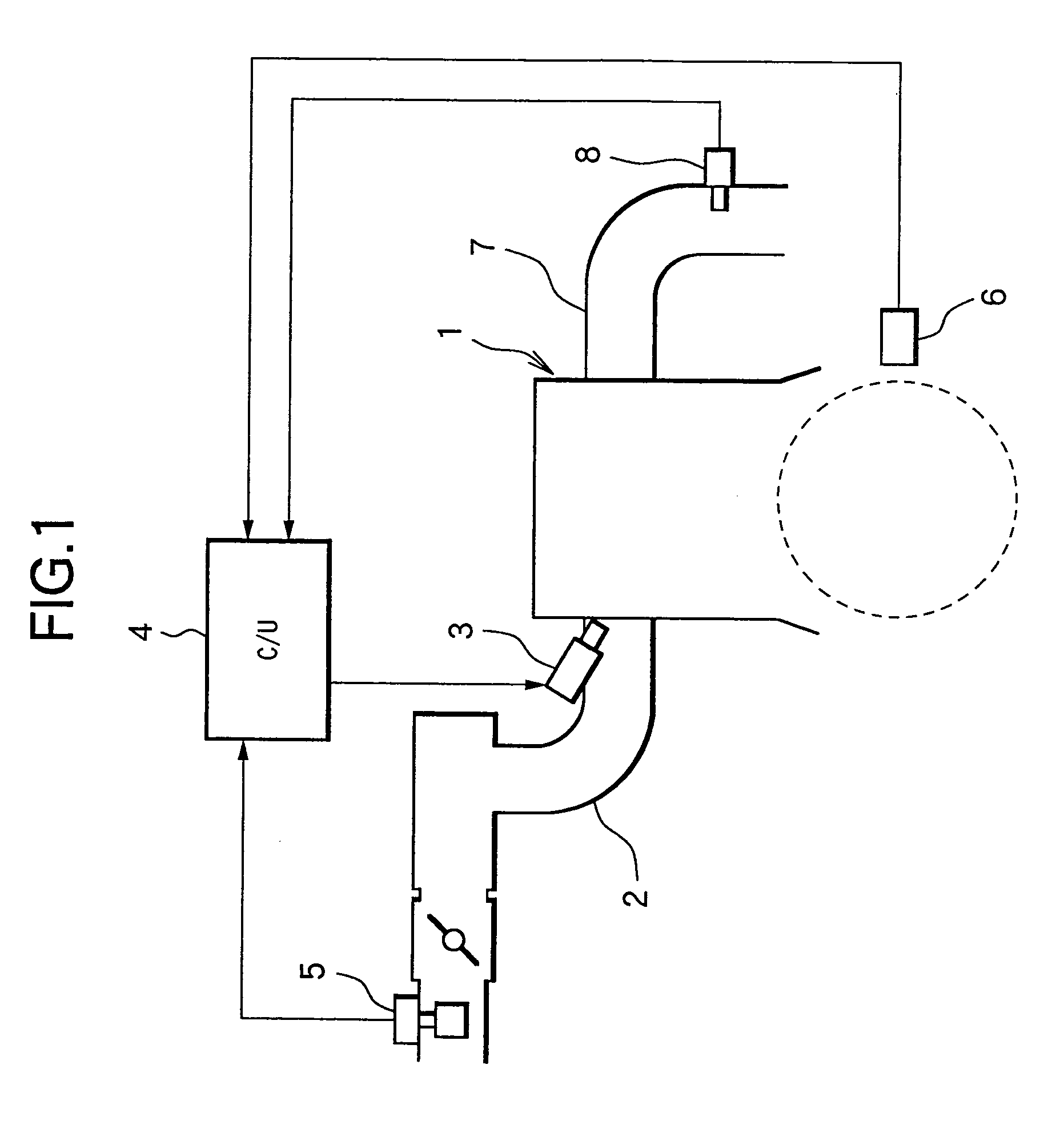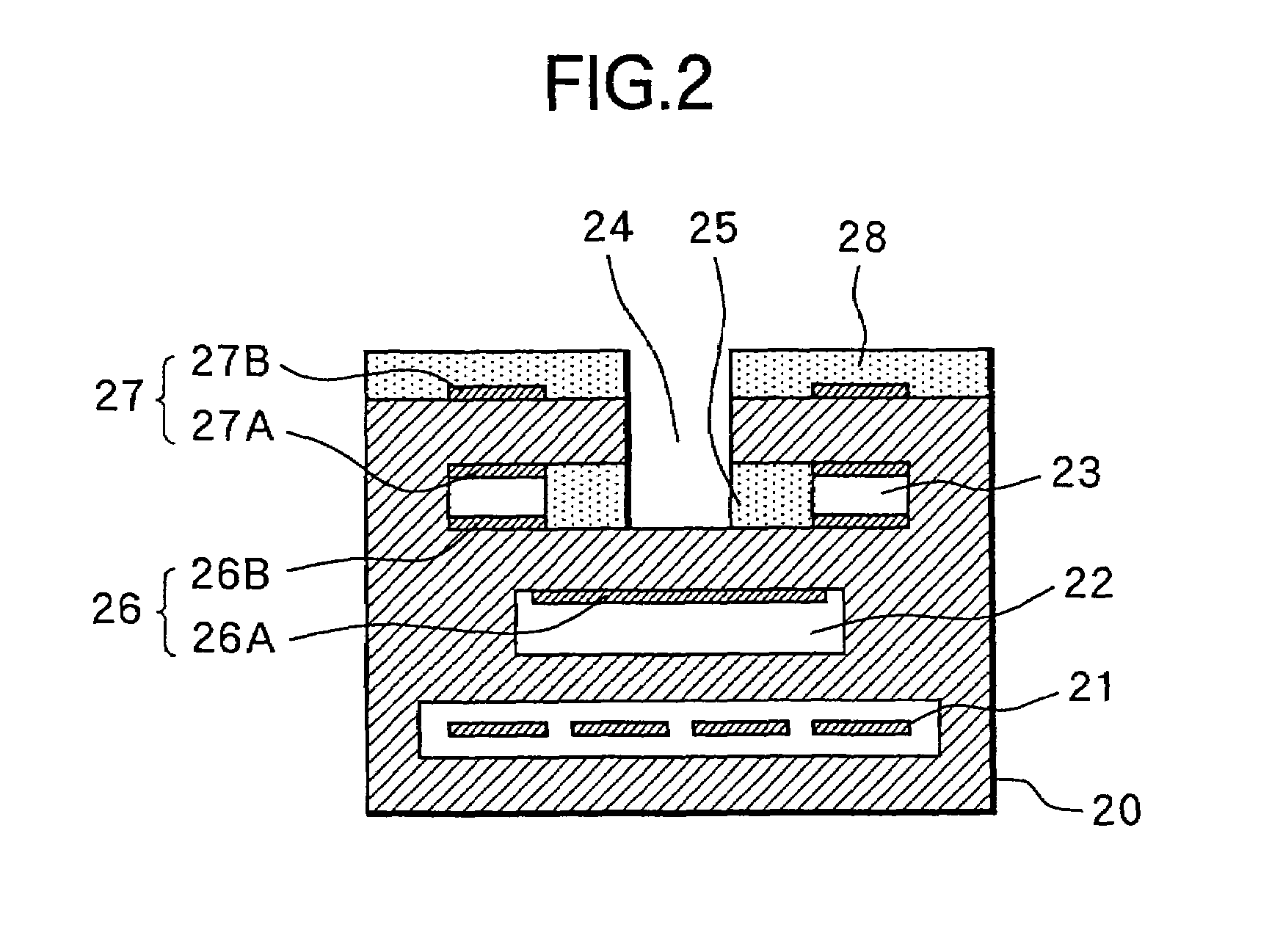Device and method for measuring element temperature of air-fuel ratio sensor, and device and method for controlling heater of air-fuel ratio sensor
a technology of air-fuel ratio and element temperature, which is applied in the direction of electric control, instruments, machines/engines, etc., can solve the problems of increasing the power consumption of the heater, deteriorating the estimation accuracy affecting the accuracy of the measurement of the element temperature, so as to prevent the fluctuation of the sensor element, accurately compute, and measure accurately
- Summary
- Abstract
- Description
- Claims
- Application Information
AI Technical Summary
Benefits of technology
Problems solved by technology
Method used
Image
Examples
first embodiment
[0061]FIG. 5 is a flowchart showing the routine for measuring the element temperature to be executed at a predetermined crank angle cycle.
[0062]In step 1 (abbreviated as “S1” in the drawing, the same holds hereinafter), the sensor output Vs is read in and set to Vaf=Vs, based on which the air-fuel ratio λ is detected.
[0063]In step 2, the switching element 13 is turned ON, and the application of voltage Vcc for measuring the element temperature to the sensor element 20 is started. In other words, immediately after reading the sensor output for air-fuel ratio detection, the application of voltage Vcc for measuring the element temperature is started.
[0064]In step 3, after a first predetermined time T1 has passed from the starting of application of voltage for measuring the element temperature, the sensor output Vs is read in and set to Vr=Vs so as to measure the internal resistance of the sensor element 20.
[0065]In step 4, the sensor output Vr being applied with voltage is corrected b...
second embodiment
[0082]FIG. 8 is a flowchart of the element temperature measurement routine to be executed instead of the flowchart of FIG. 5.
[0083]Steps 51 through 53 are the same as steps 1 through 3 in the flowchart of FIG. 5.
[0084]In step 54, the internal resistance Rs of the sensor element 11 is computed based on the sensor output Vr being applied with voltage without correction.
[0085]In step 55, the correction value for the internal resistance Rs (Rs correction value) is computed from the sensor output Vaf just before applied with voltage.
[0086]In step 56, the internal resistance Rs computed in step 54 is corrected by the Rs correction value computed in step 55.
[0087]The correction here is performed so that when the sensor output Vaf just before applied with voltage is greater, the internal resistance Rs is corrected to a smaller value, since when the sensor output Vaf just before applied with voltage is greater, the internal resistance Rs is computed to be greater than the actual value.
[0088...
third embodiment
[0089]FIG. 9 is a flowchart showing the element temperature measurement routine to be executed instead of the flowchart of FIG. 5.
[0090]Steps 61 through 63 are the same as steps 1 through 3 in the flowchart of FIG. 5.
[0091]In step 64, the internal resistance Rs of the sensor element 20 is computed based on the sensor output Vr being applied with voltage without correction. In step 65, the element temperature Ts is computed based on the internal resistance Rs of the sensor element 20 by referring to a table and the like.
[0092]In step 66, the correction value for element temperature Ts (Ts correction value) is computed based on the sensor output Vaf just before applied with voltage.
[0093]In step 67, the element temperature Ts computed in step 64 is corrected by the Ts correction value computed in step 66.
[0094]The correction here is performed so that when the sensor output Vaf just before applied with voltage is greater, the internal resistance Rs is corrected to a smaller value, sin...
PUM
| Property | Measurement | Unit |
|---|---|---|
| temperature | aaaaa | aaaaa |
| internal resistance | aaaaa | aaaaa |
| voltage | aaaaa | aaaaa |
Abstract
Description
Claims
Application Information
 Login to View More
Login to View More - R&D
- Intellectual Property
- Life Sciences
- Materials
- Tech Scout
- Unparalleled Data Quality
- Higher Quality Content
- 60% Fewer Hallucinations
Browse by: Latest US Patents, China's latest patents, Technical Efficacy Thesaurus, Application Domain, Technology Topic, Popular Technical Reports.
© 2025 PatSnap. All rights reserved.Legal|Privacy policy|Modern Slavery Act Transparency Statement|Sitemap|About US| Contact US: help@patsnap.com



